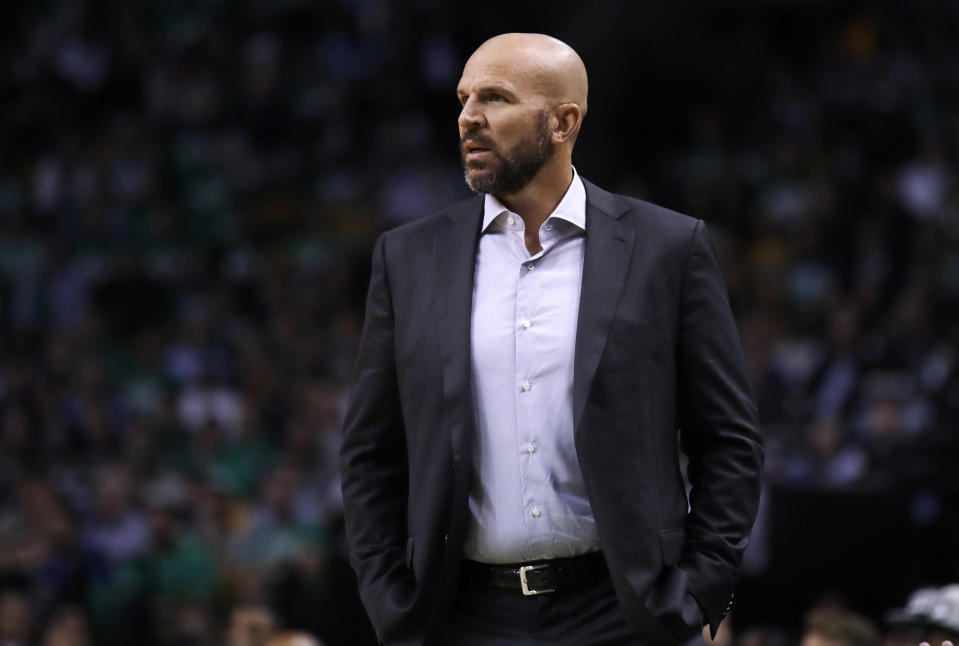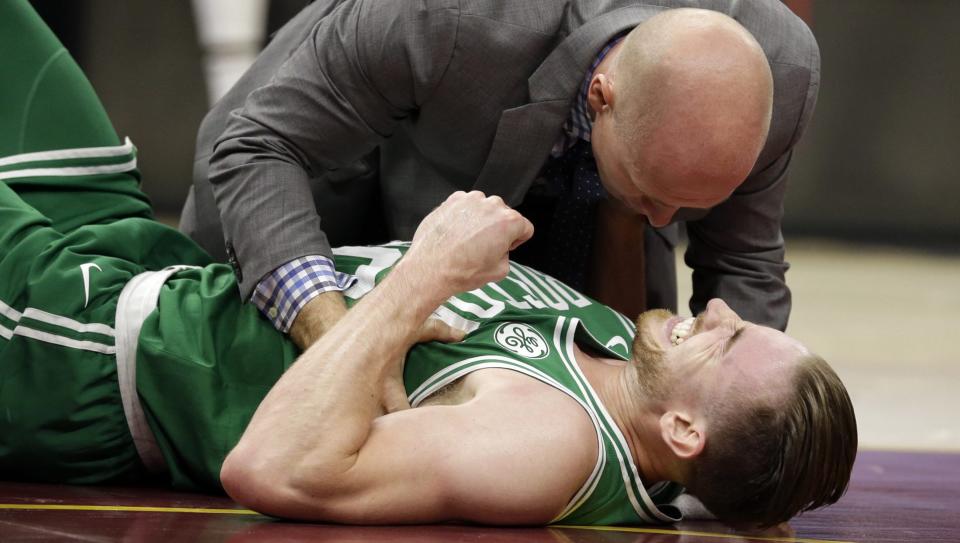Are shortened NBA training camps responsible for rash of injuries?

MILWAUKEE — For more than a week, coach Jason Kidd has watched the injuries pile up, cringing. Not to his team — the Milwaukee Bucks’ regulars, headlined by MVP candidate Giannis Antetokounmpo, have been largely healthy — but across the league, where leading players have been dropping like flies.
To Kidd, the NBA’s decision to lop off 10 days of training camp — a move made to stretch out the season, reduce the number of back-to-backs and eliminate four-games-in-five-nights situations, with an eye toward limiting the number of nationally televised games in which teams rest players — has something to do with it.
“We went extremely hard because of the shortened training camp,” Kidd said. “We tried to get guys in shape. That’s one of the big things with a shortened camp. There’s a chance of not being in basketball shape, and you see a lot of injuries, a lot of guys out.”

Kidd’s sentiments have been echoed by many coaches across the league. Shortened camps have left less time for conditioning, and poor conditioning has been viewed by coaches as a contributing factor to many of the injuries. “People say 10 days doesn’t matter,” Heat coach Erik Spoelstra said. “It does.” There are exceptions — conditioning didn’t dislocate Gordon Hayward’s ankle or cause Chris Paul to bump knees with Mario Chalmers in the preseason — but the number of early-season sprains, strains and bruises has been alarming.
The disconnect on this issue seems to involve the condition of players when they came into camp. Times have changed — most players follow rigorous offseason conditioning programs and play all summer. It’s fair to say today’s players come to camp in better shape than ever before. At the same time, coaches note that a high level of activity does not get you in NBA regular-season shape. As one assistant coach told Yahoo Sports, “Have you seen a summer pickup game?”
For coaches, there was a degree of ignorance on this issue. Kidd, one of the most outspoken critics of the shortened camp, once advocated for it. And there was little pushback from the coaches when the idea was originally proposed. Still, after experiencing it, some, like Kidd, would like to see a return to the older, full-length camps in the future.
“I’d rather have the time before the season to prep, to get guys ready, so the product can stay on the floor,” Kidd said. “Right now, you have the product sitting. I don’t know where else they can go from here — maybe having two games a week and then one week of training camp. It’s got to be reviewed. People are coming to see the product and the product is in suits. And that is unfortunate.”
On to your email …
How do you see the Magic season going? Are 40 wins realistic?
— Christina Flores
Break up the Magic! Orlando — basketball’s island of misfit toys last season — has been sharp. It has a pair of wins over probable playoff teams — Miami and Cleveland — and the latter was a 21-point road drubbing without Aaron Gordon and Elfrid Payton. Cleveland whittled the Magic lead to seven in the third. Last season, the Magic might have folded, as D.J. Augustin noted. This year, they recovered and held on.
So, is 3-1 a sign of things to come? I’d caution against getting too giddy. The shortened training camp has led to some weird early-season numbers (the Nets and the Warriors have identical 3-2 records, through Wednesday), and roster continuity, however flawed, has probably helped the Magic get off to a fast start. The problems that plagued the team last season — a lack of 3-point shooting, a glut of non-shooters in the frontcourt, an inconsistent Mario Hezonja — remain.
But the Magic are well-coached — Frank Vogel continues to be one of the most underrated in the league — and the addition of Jonathan Simmons has added a versatile wing player with Spurs DNA to the mix. Forty wins might be a stretch, but 35 and a chance to fight for one of the woebegone Eastern Conference’s final playoff spots into March is possible.

Gordon Hayward’s agent and the Celtics have both said he is not expected back for the season. But as a professional athlete, I can’t imagine Gordon not wanting to get back on the court this year. Is it possible they have an idea that he could come back and are downplaying it so fans don’t get their hopes up? There was a reported 4-to-6 months recovery time. February would be four months and April six months. With all the medical advances, are we to believe a professional athlete can’t come back to the court in that time frame?
— Jason Gallo
Boston has not ruled out Hayward, so, yes, there is a possibility he could be back before the end of the year. But I wouldn’t count on it. Beyond the healing, rehabilitation and conditioning he would have to go through to play, there is also a mental hurdle to overcome. Hayward has to get comfortable again cutting, elevating and landing on that ankle. There’s little doubt that he will do it, but asking him to in the late stages of a playoff push or in a playoff series feels like too much to ask.
Look, Boston is playing the long game here. They know the Eastern Conference is more open than it has been in years, but they also know that this team was built to win in Year Two, Three and Four of Hayward’s contract, when promising young stars Jaylen Brown and Jayson Tatum are ready to be factors in the postseason. A Hayward late-season return would be inspirational, but probably not all that impactful. He won’t be ready to play 30-plus minutes, not until next season.
What do you make of this whole [Eric] Bledsoe situation that’s going on in Phoenix? If they wanted to trade him, they should have done so during the draft or over the summer. Trading him now, the Suns won’t get any value in return for him due to free agents not being eligible to be traded until after Dec. 15. In the end, should they wait this out to get better offers come December or try to work things out with him and have him play again?
— Deven Parikh
We’ve reached the point of no return for Bledsoe in Phoenix, a fact essentially confirmed by GM Ryan McDonough’s napalming of Bledsoe and his agent, Rich Paul, in a gaggle with reporters and a subsequent local radio interview. The Suns don’t want Bledsoe around, he doesn’t want to be there and all that is left is for Phoenix to decide just how low they will go on offers for its highest-paid player.
On that note, this could play out for a while. In canvassing the league, there is still significant interest in Bledsoe. He’s 27 and a 20-point-per-game scorer the previous two seasons with a manageable contract ($29.5 million over the next two years). Phoenix won’t just give him away. They want a quality young player, and a team won’t make that kind of offer while the Suns’ backs appear to be against the wall.
Still, doesn’t a Denver deal involving Emmanuel Mudiay make sense? Mudiay, the seventh overall pick in 2015, has struggled with his shot in Denver and continues to turn the ball over at an alarming rate. But he’s 21 and could be rehabilitated on a Phoenix team committed to a youth movement. Bledsoe would stabilize the Nuggets’ point-guard position and is young enough to fit into their long-term plans, too. A big salary would have to be thrown in — Kenneth Faried’s name has been mentioned — but that’s a deal both sides could benefit from.


